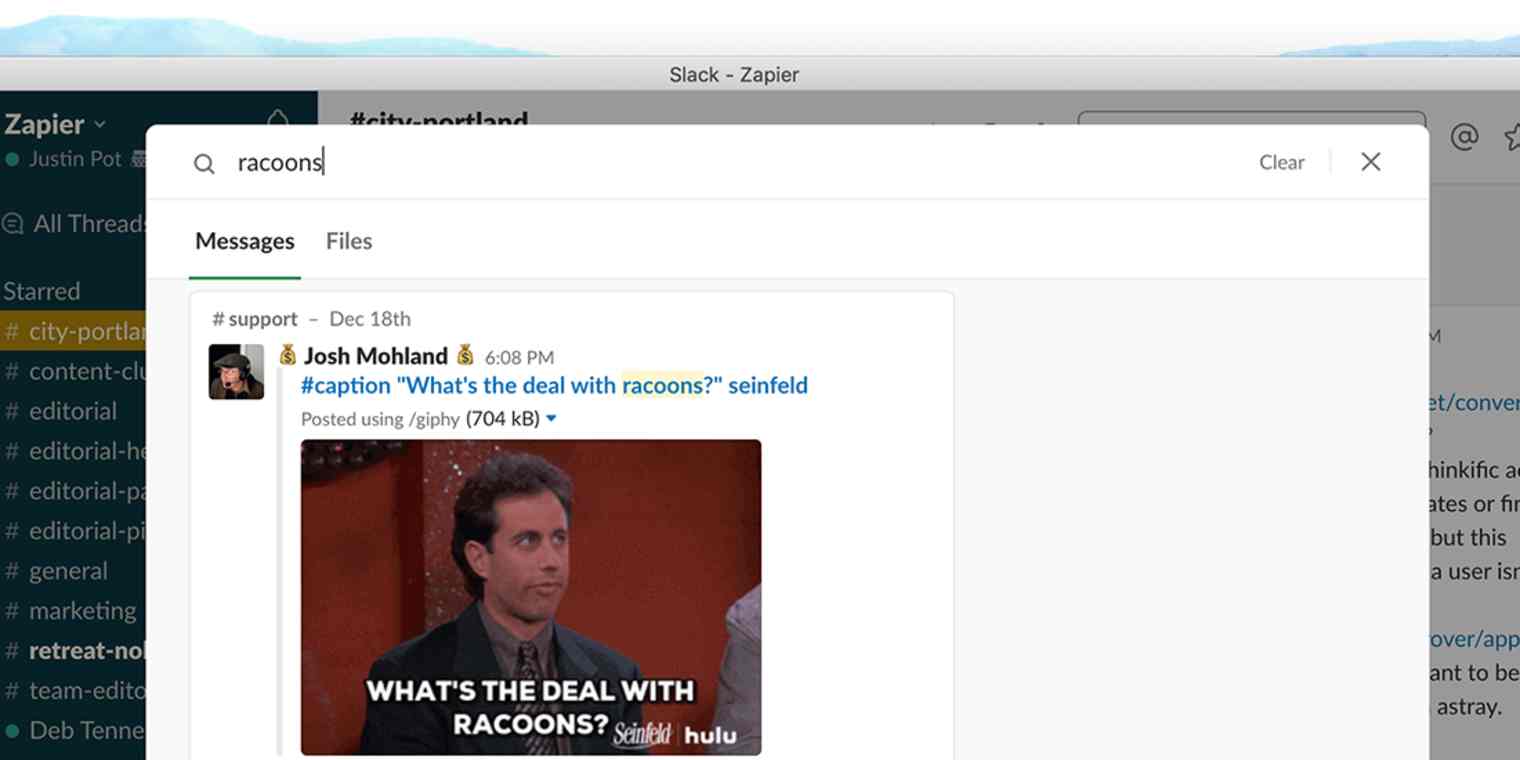App tutorials
2 min readHow to Use Slack Search
How to find that one piece of information you're certain someone told you.
By Justin Pot · January 15, 2019

Get productivity tips delivered straight to your inbox
We’ll email you 1-3 times per week—and never share your information.
Related articles
Improve your productivity automatically. Use Zapier to get your apps working together.





